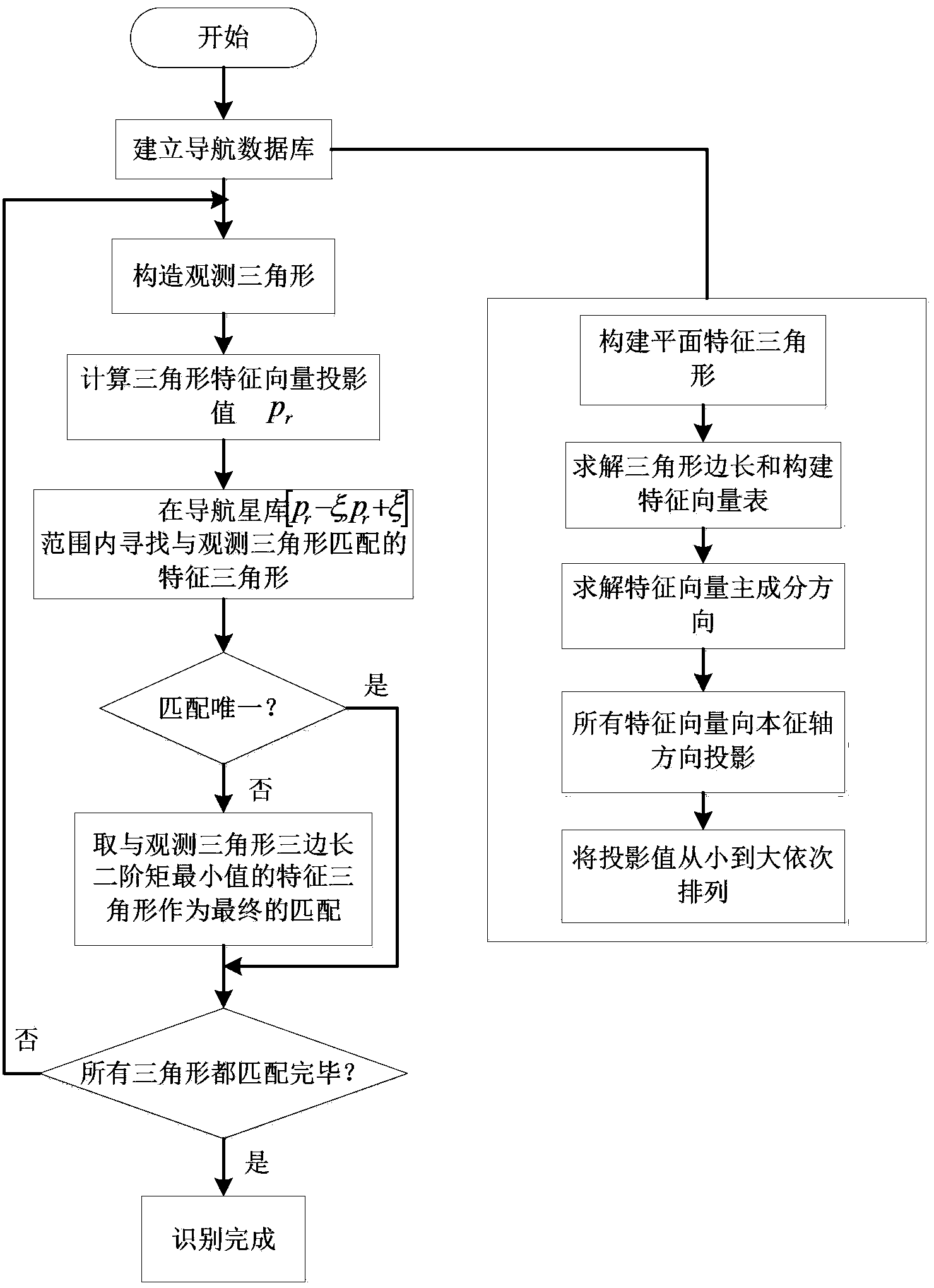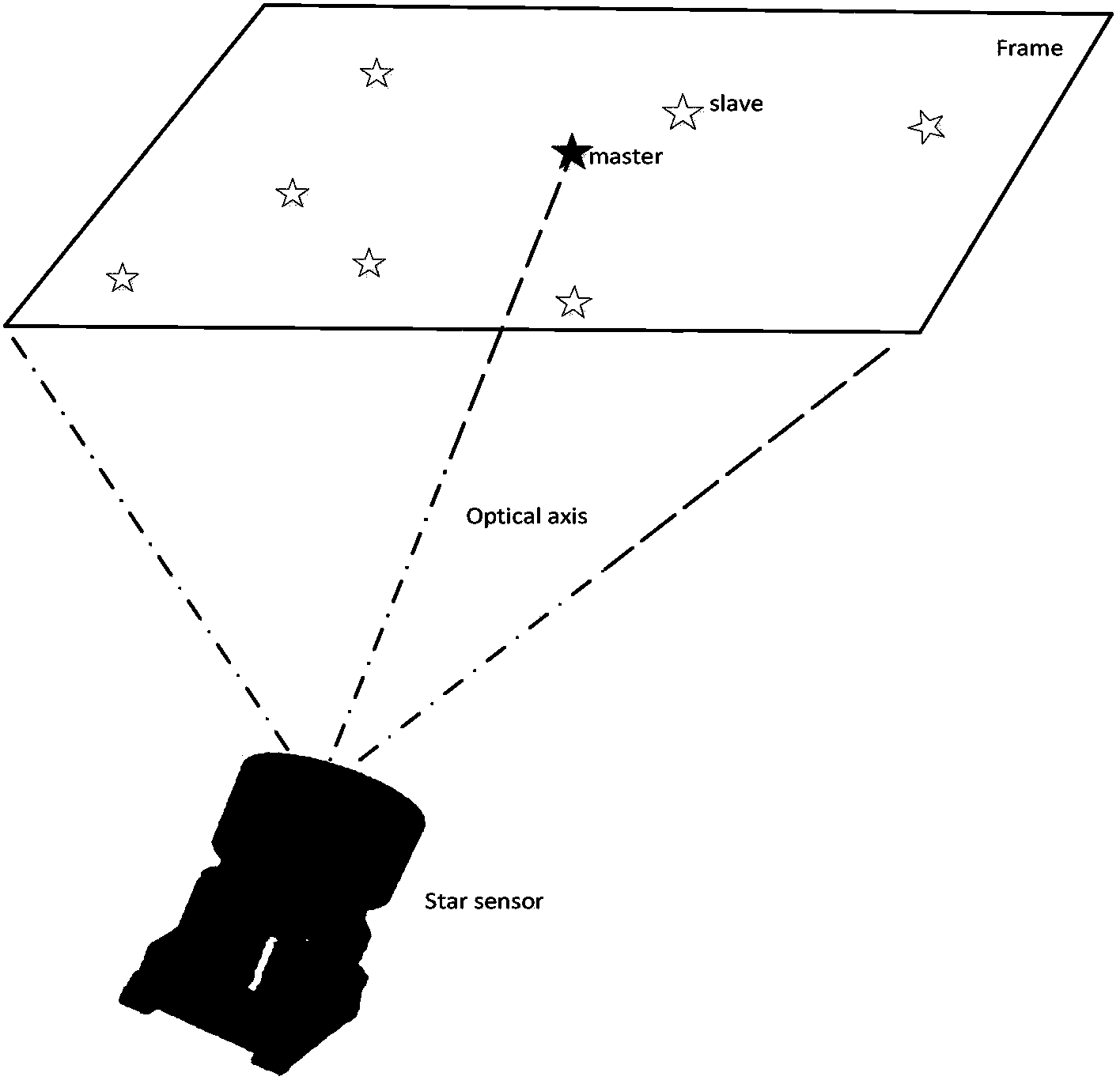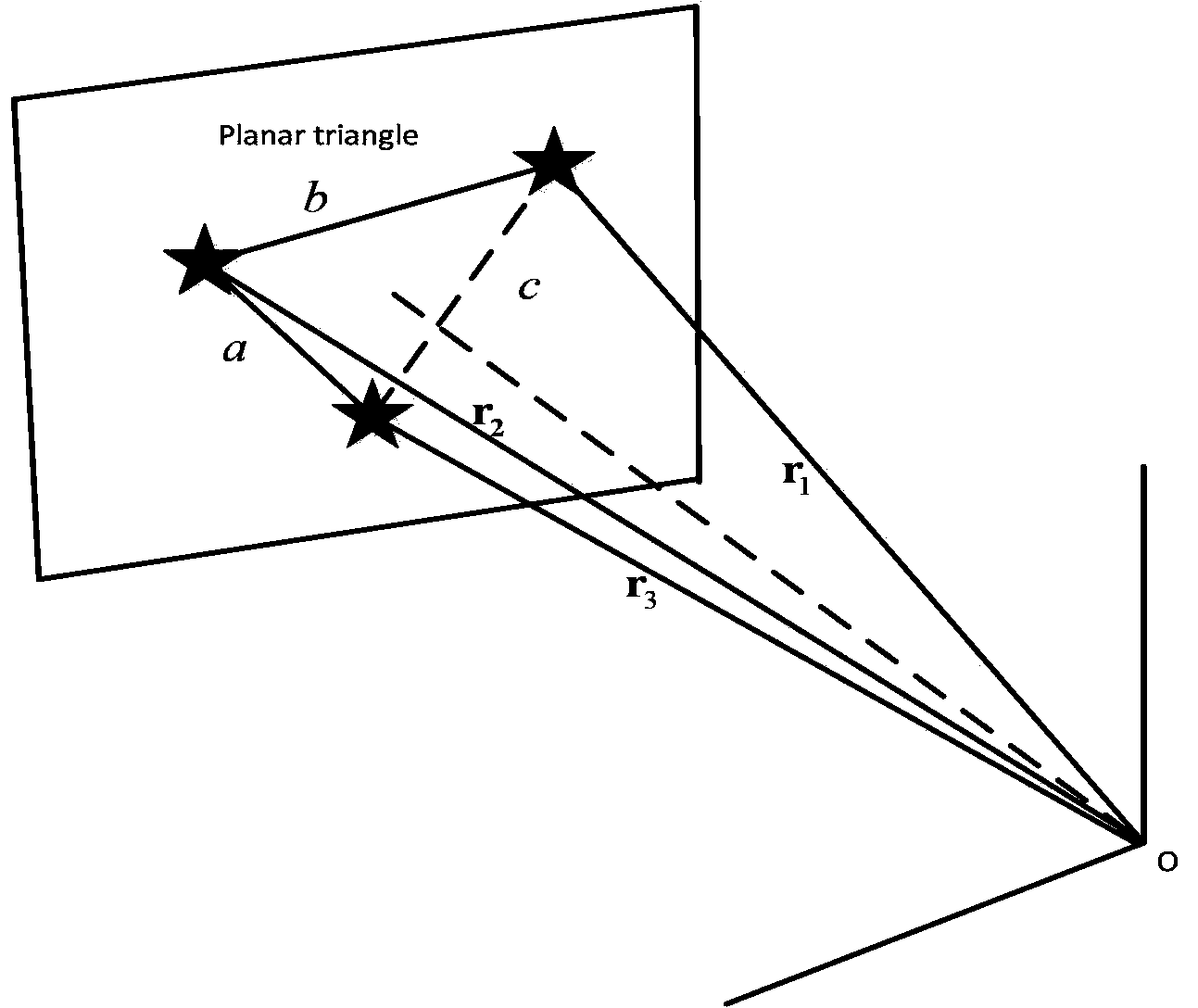Star pattern recognition method based on principal component analysis of plane triangles
A principal component analysis, star map recognition technology, applied in the direction of integrated navigator, can solve the problems of poor noise robustness, harsh triangle construction, redundant matching and other problems, to speed up the search speed, reduce the recognition time, robustness strong effect
- Summary
- Abstract
- Description
- Claims
- Application Information
AI Technical Summary
Problems solved by technology
Method used
Image
Examples
Embodiment
[0055] The plane triangle recognition method proposed by the invention significantly improves the recognition rate of the observed triangles. As shown in Figure 5, the star map recognition method of the present invention and the traditional triangle recognition method are used to identify 1000 simulated star maps randomly generated, and the recognition rates of the two recognition methods under position noise and magnitude noise are counted. When performing star map identification, both methods are based on the following conditions: the field of view of the star sensor is 10°X10°, the resolution is 1024X1024, the pixel size is 12μm×12μm, and the focal length of the optical system is 58.1536mm. The maximum magnitude that the star sensor can be sensitive to is 6.0, and the number of stars in the field of view is not less than 5. Curve 1 in Fig. 5 is the recognition rate curve of this recognition algorithm, and curve 2 is the traditional triangle recognition rate curve, from Fi...
PUM
| Property | Measurement | Unit |
|---|---|---|
| Focal length | aaaaa | aaaaa |
Abstract
Description
Claims
Application Information
 Login to View More
Login to View More - R&D
- Intellectual Property
- Life Sciences
- Materials
- Tech Scout
- Unparalleled Data Quality
- Higher Quality Content
- 60% Fewer Hallucinations
Browse by: Latest US Patents, China's latest patents, Technical Efficacy Thesaurus, Application Domain, Technology Topic, Popular Technical Reports.
© 2025 PatSnap. All rights reserved.Legal|Privacy policy|Modern Slavery Act Transparency Statement|Sitemap|About US| Contact US: help@patsnap.com



